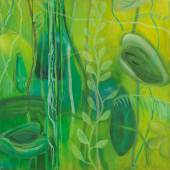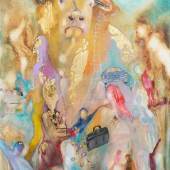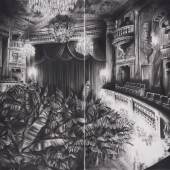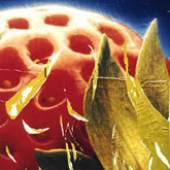KIAF08 Korea I
KIAF08 Korea International Art Fair
-
Messe19.09.2008 - 23.09.2008
Josef Felix Mueller has been grappling with the question of human nature ever since the beginnings of his career as an artist. At the start, not only painting but also drawing, sculpture and printed graphics were the means to express the "states of human beings, which often converge into ritualised images". However, since the turn of the millennium, the artist has concentrated mainly on "the painterly reconstruction of nature" (cit. "Der übergeordnete Koerper" [The Superordinate Body], Josef Felix Mueller, Sept. 2007). "Josef Felix Mueller's painting was always representational; in recent years, it has developed increasingly in the direction of naturalism, a term employed by art criticism with some equivocation, but, owing to the alarming ecological situation, is once more being loaded with new significance and meanings.
Erró regards painting as the pleasure of being able to talk back and provoke. He assembles his collages from media waste, creating ever new mixtures of the world of consumption and art history, of political propaganda and documentary photographs. His home-country Iceland did not turn Erró into a romanticist. By provoking ordinary people, he uses his sense of humor to fight against all horrors.
Since the beginning of the 50s Mimmo Rotella (born 1918 in Catanzaro, Calabria. Died 2006 in Milano, Italy) manipulated already existing posters. Far away from the "holy aura" of art, these pictures are endlessly reproduced and reproducible. In the modern virtual and digital world his work can be seen as the attempt to criticise and to confront the image itself. The decision to use torn paper as an artistic material, was taken out of the impulse - as Emilio Villa stated in June 1959 at the opening of the exhibition in the Galleria La Salita, Rome - " to create pictures out of everything, out of all the matter in the world..." Rotellas disfigurations aim to expose the icons of advertising.
recycling of pictures taken from newspapers and magazines on a new level: empty catch phrases are unmasked, high-gloss pictures begin to crack, bucolic settings wobble and wilt, customary things are filtered and become obscure, and what is simple, unspectacular, actually a detail, is made significant. The letters and words seem to float in space, or are woven into parts of a painting, such as pieces of paper, scrolls, jackets, T-shirts, ties or other garments. Leikauf presents contemporary emblems to the onlooker; yet their delightful appearance is offset by the juveniles that he shows. This is what the resonance contains which bounces off these mostly two-colored pictures: a sad emptiness and the advice not to be gullible. "Don't trust them" could be a title for a picture by Andreas Leikauf.
Oliver Dorfer presents a position within the Austrian contemporary art, which connects the motif-orientated language of pictures of the 1980th with a high sensibility for optical systems of current artistic forms of appearances. He works on the tension between universal validity of the simplest story and the complex interleave of signs of our pic-media-society. His new works show few recurring motives, which form logos, icons and piktograms, and create his distinctive visual language. Although he works traditional with brush and acryl on plastic, he talks about his paintings as pics or visuals and refers with his picture series in comic style on narrations of comics, pop und trash.
Convinced that the development of painting may not be allowed to lag behind its own history, we are looking for a pictorial idiom in which, for example, the dynamics of baroque, the filmic quality of nineteenth-century historical painting converge with pop art and abstraction. This means our pictures are caught up in movement. If - having read Baudelaire with Foucault - modernity defines itself as attitude seeking to register what is ironic, "what there is of the heroic in the present moment", our works most clearly position themselves in the very place where boundaries become blurred, spaces and figures dissolve, where different time cycles meet. Asgar/Gabriel
-
11.04.2024 - 31.05.2024Die Galerie Ernst Hilger präsentiert den vielfach ausgezeichneten kolumbianischen Künstler...
-
19.09.2008 - 23.09.2008Messe »







